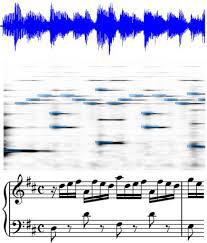Search Results for author: Dongyu Li
Found 8 papers, 2 papers with code
Reducing Action Space: Reference-Model-Assisted Deep Reinforcement Learning for Inverter-based Volt-Var Control
no code implementations • 10 Oct 2022 • Qiong Liu, Ye Guo, Lirong Deng, Haotian Liu, Dongyu Li, Hongbin Sun
We investigate that a large action space increases the learning difficulties of DRL and degrades the optimization performance in the process of generating data and training neural networks.
Reducing Learning Difficulties: One-Step Two-Critic Deep Reinforcement Learning for Inverter-based Volt-Var Control
no code implementations • 30 Mar 2022 • Qiong Liu, Ye Guo, Lirong Deng, Haotian Liu, Dongyu Li, Hongbin Sun, Wenqi Huang
Then we design the one-step actor-critic DRL scheme which is a simplified version of recent DRL algorithms, and it avoids the issue of Q value overestimation successfully.
An Efficient Protocol for Distributed Column Subset Selection in the Entrywise $\ell_p$ Norm
no code implementations • 1 Jan 2021 • Shuli Jiang, Dongyu Li, Irene Mengze Li, Arvind V. Mahankali, David Woodruff
We give a distributed protocol with nearly-optimal communication and number of rounds for Column Subset Selection with respect to the entrywise {$\ell_1$} norm ($k$-CSS$_1$), and more generally, for the $\ell_p$-norm with $1 \leq p < 2$.
Sampling-based 3-D Line-of-Sight PWA Model Predictive Control for Autonomous Rendezvous and Docking with a Tumbling Target
no code implementations • 30 Jul 2020 • Dongting Li, Rui-Qi Dong, Yanning Guo, Guangtao Ran, Dongyu Li
In this paper, a model predictive control (MPC) framework is employed to realize autonomous rendezvous and docking (AR&D) with a tumbling target, using the piecewise affine (PWA) model of the 3-D line-of-sight (LOS) dynamics and Euler attitude dynamics.
Adaptive Feedforward Neural Network Control with an Optimized Hidden Node Distribution
1 code implementation • 23 May 2020 • Qiong Liu, Dongyu Li, Shuzhi Sam Ge, Zhong Ouyang
Composite adaptive radial basis function neural network (RBFNN) control with a lattice distribution of hidden nodes has three inherent demerits: 1) the approximation domain of adaptive RBFNNs is difficult to be determined a priori; 2) only a partial persistence of excitation (PE) condition can be guaranteed; and 3) in general, the required number of hidden nodes of RBFNNs is enormous.
Off-policy Maximum Entropy Reinforcement Learning : Soft Actor-Critic with Advantage Weighted Mixture Policy(SAC-AWMP)
no code implementations • 7 Feb 2020 • Zhimin Hou, Kuangen Zhang, Yi Wan, Dongyu Li, Chenglong Fu, Haoyong Yu
A common way to solve this problem, known as Mixture-of-Experts, is to represent the policy as the weighted sum of multiple components, where different components perform well on different parts of the state space.
Complex Transformer: A Framework for Modeling Complex-Valued Sequence
1 code implementation • 22 Oct 2019 • Muqiao Yang, Martin Q. Ma, Dongyu Li, Yao-Hung Hubert Tsai, Ruslan Salakhutdinov
While deep learning has received a surge of interest in a variety of fields in recent years, major deep learning models barely use complex numbers.
 Ranked #2 on
Music Transcription
on MusicNet
Ranked #2 on
Music Transcription
on MusicNet
Small traffic sign detection from large image
no code implementations • journal 2019 • ZhiGang Liu, Dongyu Li, Shuzhi Sam Ge, Feng Tian
It concatenates the features of the different layers into a fused feature map to provide sufficient information for small traffic sign detection.


